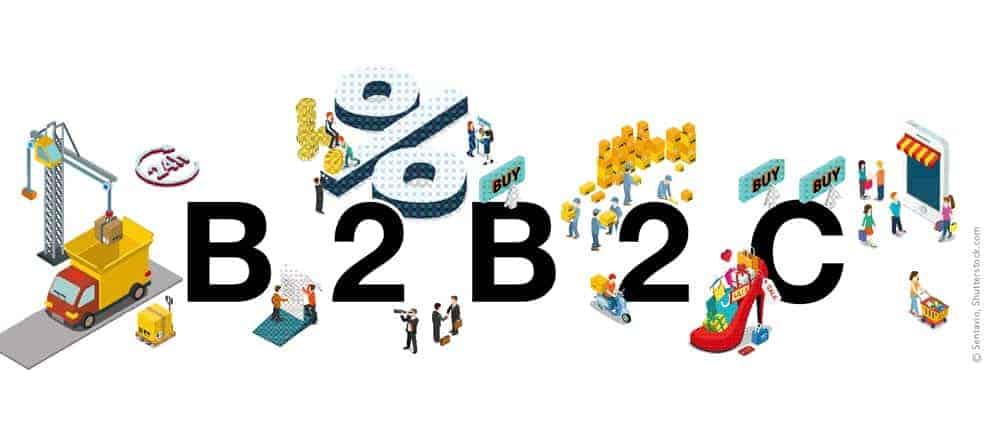The boundaries between B2B and B2C are blurring


In Germany, online commerce in the B2B sector is expected to reach the trillion mark in 2018 and is predicted to continue to have great growth potential.
According to forecasts, 74 percent of companies expect half of B2B purchases to be made online by 2025. What's more, B2B buyers are getting younger and younger. The average age is currently already under 35.
New-generation shoppers today expect a different standard of shopping than they did ten years ago. They buy predominantly online and transfer their personal experiences from the B2C sector to the shopping experience at work. For companies, this means they must design the customer experience accordingly in order to remain competitive.
B2B much more complex than B2C
B2B and B2C purchases are motivated in fundamentally different ways. While the B2C customer is inspired by his customer journey, which is strongly based on emotions, and then orders on his own initiative, the B2B buyer does not decide "if" but only "where".
He purchases on the basis of a specific order, which he must fulfill as quickly as possible. The majority of procurement in B2B is re-procurement. Impulse purchases tend toward zero.
B2B suppliers therefore face a variety of challenges based on the complexity of B2B: partial orders, complex discount systems, repeat orders, and real-time data are just a few.
Tomorrow's shoppers no longer expect a classic catalog, but search functions, product details on demand, and data in real time. However, the shopping experience for a machine with 20 configuration options is much more difficult to implement than the purchase of sweaters or computer games.
B2B companies must therefore not only appeal to shoppers' emotions, but also offer a practical and convenient solution. Solutions to enhance the shopping experience are therefore in demand in both the B2C and B2B sectors.
This is also demonstrated by SAP's latest acquisition: at the beginning of November, the purchase of Qualtrics, pioneer for experience management software, was announced.
In the B2B sector in particular, many companies have not yet fully exploited the opportunities offered by the Internet. Game changers such as Amazon B2B or Alibaba are consistently focusing on the customer experience in their B2B solutions, thus displacing already established players. These B2B marketplaces open up opportunities for smaller companies in particular to increase their online reach and reach new customers.
However, the first major companies, such as Siemens Mobility, have already recognized how important the shopping experience is in the B2B sector as well. With the Easy Spares Marketplace, a B2B marketplace for the sale of train spare parts, Siemens wants to simplify spare parts procurement for customers.
Michael Bitsch, Head of eBusiness at Siemens Mobility Customer Services, explains the concept:
"All of us who are in B2B are also B2C customers and know how fast and easy shopping can be. Bringing that experience to B2B was one of our main concerns."
B2B equals B2C?
Despite the differences, there is a common denominator for B2B and B2C: the buyer. B2B should be oriented to B2C, because the requirements and needs of customers are not fundamentally different.
Awareness should be created that there is a human behind every purchase decision and every customer journey - regardless of B2B or B2C.
Thought leader Bryan Kramer is also championing the cause with the hashtag #H2H: away from terms like B2B, B2C, or even B2C2B, and toward human to human.







